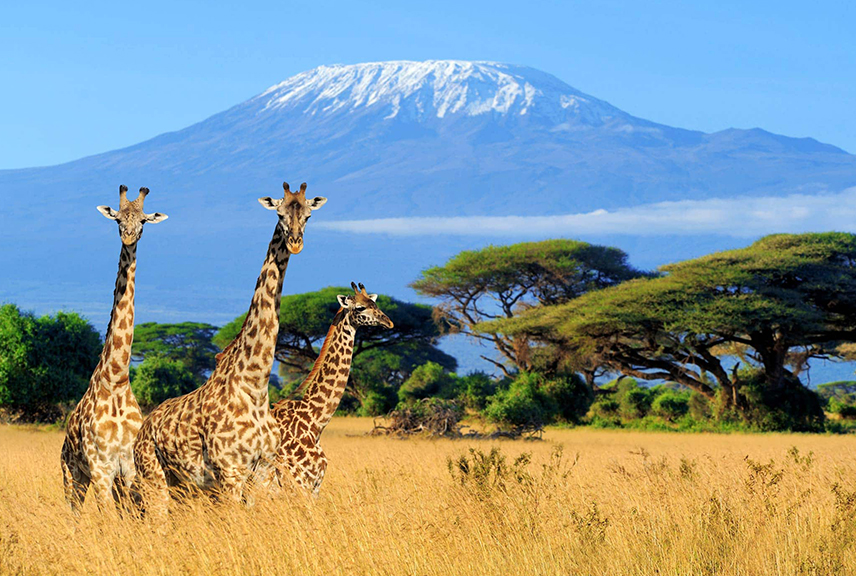
Tanzania is Africa’s visual masterpiece, boasting stunning wildlife, beautiful beaches, ancient towns, and geological wonders. Mount Kilimanjaro, Africa’s highest peak, offers a life-changing climbing experience with its breathtaking views.
It’s the perfect destination for a bush and beach getaway, where you can witness the Great Migration in the Serengeti and unwind on the beautiful shores of Zanzibar, the exotic Spice Island.
Serengeti National Park Overview
Serengeti National Park spans approximately 1,476 square kilometers of rolling plains, extending to Lake Victoria and the Kenyan border. It is home to over three million large animals, captivating travelers with its wildlife. The Maasai term "siringitu" means "the place where the land moves on forever." The park includes two Biosphere reserves and two World Heritage sites, attracting filmmakers, photographers, scientists, and writers. Its ecosystem, one of the oldest on earth, has remained largely unchanged over the years.
About the Great Migration
The Great Migration is a spectacular event in Serengeti, renowned for the movement of about 220000 zebras and millions of wildebeests. Each year, from October to November, they migrate south from the northern hills to the southern plains in search of lush grasses and tropical rains. The journey continues northward after heavy rains between April and June, passing through rivers and valleys.
This migration occurs in various protected areas, with the best viewing spots being Serengeti in Tanzania and Maasai Mara National Reserve in Kenya. Serengeti is also home to diverse wildlife, including lions, leopards, and elephants, and is a habitat for over 500 bird species.
How to get there
Most safaris to Serengeti National Park begin in Arusha. The best route is to fly into Kilimanjaro International Airport, just 46 km from Arusha. Alternatively, you can land at Julius Nyerere Airport and take a domestic flight to Arusha or drive from Nairobi, Kenya.
From Arusha to Serengeti, you can catch a charter plane to one of the park's airstrips. The distance is about 325 km, and a road trip takes around eight hours, offering scenic views of wildlife along the bumpy roads.
What to do in the Park
Visit the Grumeti River in the Central part of the park, known for its large crocodile population and aquatic species. It's a great picnicking spot and a prime viewpoint for the wildebeest migration, where crocodiles wait to feast on various animals during this time.
Hot Air Balloon Safari
One of the most thrilling experiences in Serengeti is a hot air balloon safari, offered in the northern or central park during dusk. From the basket, you can enjoy inspiring views of the park's abundant wildlife and rolling hills.
Visit Maasai Land
If wildlife isn't your primary interest, Serengeti is also rich in culture. Explore Maasai land to gain insight into their traditions, and interact with locals who can share information about the park’s wildlife. Don't forget to pick up affordable local souvenirs, like handmade beads. The best time for a Serengeti safari is between April and May.
The wildebeest migration is an annual event where millions of animals, including wildebeests, zebras, and gazelles, move from Tanzania's Serengeti to Kenya's Maasai Mara due to climatic changes. This journey typically begins at Naabi Hill in the south during the rainy season and progresses to Lobo Valley and Bologonja in the north. Visitors in Serengeti can also see impalas and the African big five, with the best viewing times in the morning.
Overview
| Peak Season |
June to October (Great Migration) |
| Low season |
March to May (Rainy season) |
| Best time to visit |
June to October (Dry season) |
| Popular Attractions |
Great Migration, Climbing Mount Kilimanjaro and Beach Holidays |
| Land Area |
947,300 km² |
Map
